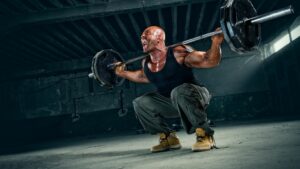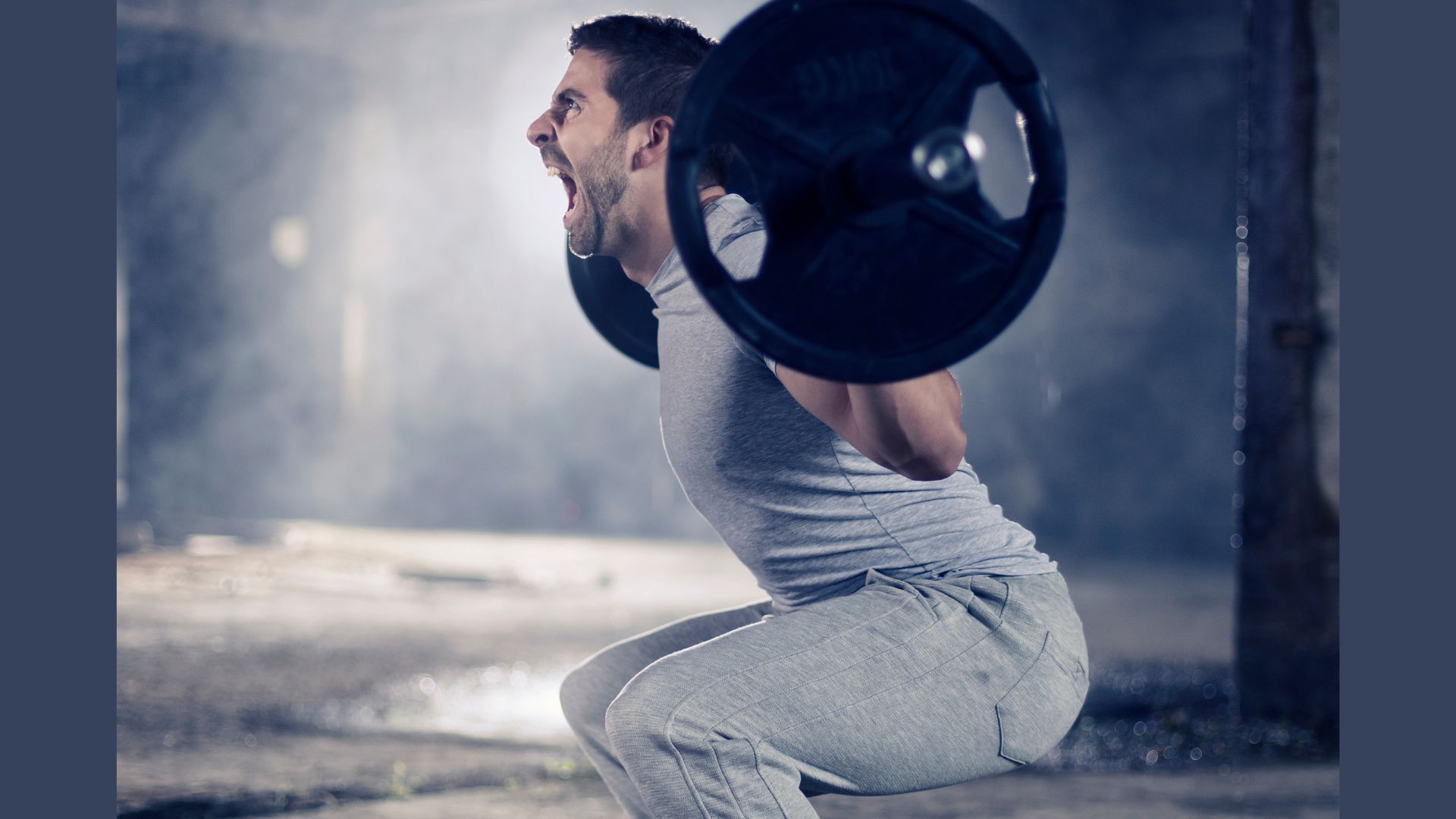Hey there, fitness enthusiasts! If you’ve ever hit the gym with the goal of mastering the back squat, you’ve probably faced the frustration of not quite hitting that ideal depth. Don’t worry; you’re not alone.
Whether you’re struggling to sink low due to stiff hips or wondering if your body’s unique anatomy is holding you back, this blog post is here to shed light on the age-old debate: Is it a mobility issue, or is your anatomy to blame?
Let’s dive in and uncover the secrets to conquering that elusive back squat depth.
Mobility or Anatomy Issue when Facing Difficulty with Back Squat Depth.
Facing difficulty with achieving proper depth in your back squat can be attributed to a combination of mobility and anatomical factors.
It’s important to consider both aspects when trying to address this issue.
Here’s a breakdown of how each can affect your squat depth:
- Mobility Issues:
- Ankle Mobility: Limited ankle mobility can prevent you from pushing your knees forward and keeping your heels on the ground. This can lead to a more upright torso and better squat depth. If you have poor ankle mobility, consider stretching and mobility exercises for your ankles.
- Hip Mobility: Adequate hip mobility is crucial for achieving a deep squat. If your hips are tight, you may not be able to lower your body properly. Regular hip mobility exercises such as hip flexor stretches, pigeon pose, and hip circles can help.
- Thoracic Spine Mobility: The ability to maintain an upright chest and a neutral spine is essential during a squat. Limited thoracic spine mobility can result in a rounded upper back and make it challenging to maintain good form. Perform exercises like foam rolling, thoracic extensions, and stretches to improve thoracic mobility.
- Anatomical Factors:
- Femur Length: Your individual anatomical structure, specifically the length of your femurs (thigh bones), can impact your squat depth. Individuals with long femurs relative to their torso may naturally find it more challenging to reach deep squat positions. In such cases, you’ll need to work within your anatomical limits and focus on maintaining proper form rather than trying to match someone else’s squat depth.
- Hip Structure: Some people have hips with less natural external rotation, which can limit their ability to open their hips fully during a squat. This is often referred to as hip anatomy or hip structure, and it can impact your squat mechanics.
To address your difficulty with back squat depth, it’s recommended to:
- Assess Your Mobility: Identify which specific mobility areas are limiting your squat. This may require consulting with a fitness professional or physical therapist who can perform mobility assessments.
- Incorporate Mobility Exercises: Develop a targeted mobility routine that addresses your specific limitations. Consistent stretching and mobility work can help improve your range of motion over time.
- Practice Proper Technique: Focus on maintaining proper squat form, even if it means not going as deep initially. As your mobility improves, your squat depth should increase naturally.
- Consider Your Anatomical Limitations: Understand that everyone’s body is unique, and you may have certain anatomical limitations that affect your squat. Work on optimizing your squat within your individual capabilities.
- Seek Professional Guidance: If you’re unsure about the root causes of your squat depth issues or how to address them effectively, consider consulting with a certified strength and conditioning coach or physical therapist who can provide personalized guidance.
Remember that achieving proper squat depth is a gradual process, and it’s crucial to prioritize safety and form over depth.
Over time, with consistent effort and targeted mobility work, you should see improvements in your squat depth and overall performance.
Further Explanations.
Let’s dive deeper and elaborate further on all the points mentioned.
Firstly, let’s dive deeper into each of the mobility issues and the exercises that can help address them:
Mobility issues.
1. Ankle Mobility:
Issue: Limited ankle mobility can restrict the forward movement of your knees and prevent you from keeping your heels on the ground during a squat.
This limitation can result in a more upright torso and hinder your ability to achieve proper squat depth.
Exercises to Improve Ankle Mobility:
a. Ankle Dorsiflexion Stretch: Sit on your knees with your toes tucked under, and gently lean back to stretch your ankles. Hold this position for 20-30 seconds, and repeat several times.
b. Calf Raises: Stand on an elevated surface with your heels hanging off the edge. Lower your heels as far as you can, then raise them as high as possible. Perform 3 sets of 15-20 repetitions.
c. Goblet Squats: Hold a weight close to your chest and perform squats. This can help you work on ankle mobility while squatting.

2. Hip Mobility:
Issue: Limited hip mobility can restrict your ability to lower your body deeply into a squat. This can result in an incomplete squat and limit your overall squatting performance.
Exercises to Improve Hip Mobility:
a. Hip Flexor Stretch: Kneel on one knee and extend the other leg behind you. Lean forward, feeling the stretch in your hip flexors. Hold for 20-30 seconds on each side.
b. Pigeon Pose: In yoga, this pose involves bringing one leg forward with the knee bent at a 90-degree angle and the other leg extended straight back. Lean forward to feel the stretch in your hips. Hold for 20-30 seconds on each side.
c. Hip Circles: Stand with your feet hip-width apart and rotate your hips in a circular motion. Perform 10-15 circles in each direction to improve hip mobility.
3. Thoracic Spine Mobility:
Issue: Limited thoracic spine mobility can result in a rounded upper back during a squat, making it difficult to maintain proper form and leading to a reduced squat depth.
Exercises to Improve Thoracic Spine Mobility:
a. Foam Rolling: Lie on a foam roller along your upper back and gently roll back and forth to release tension and improve mobility. Spend 1-2 minutes on this exercise.
b. Thoracic Extensions: Sit on the floor with your legs extended and your hands behind your head. Gently arch your upper back backward, keeping your lower back stationary. Hold for a few seconds and return to the starting position. Perform 10-15 repetitions.
c. Thread the Needle Stretch: Start on all fours, and then thread one arm under the other, reaching as far as you can while rotating your upper back. Hold for 20-30 seconds on each side.
Consistency is key when working on mobility. Aim to incorporate these exercises into your daily or weekly routine to see improvements over time.
Additionally, consult with a fitness professional or physical therapist for personalized guidance and to address any specific issues you may have.
Anatomical factors.
Let’s explore these anatomical factors that can affect your squat depth in more detail:
1. Femur Length:
Anatomical Factor: The length of your femurs (thigh bones) relative to your torso can significantly impact your squat mechanics. Individuals with long femurs compared to their torso may face challenges when trying to achieve a deep squat.
Impact on Squat Depth: Long femurs can lead to a more forward-leaning torso during a squat, which can make it difficult to maintain proper form and reach significant depth. To compensate, the body may naturally limit how deep you can squat.
Working Within Your Limits: If you have long femurs, it’s essential to work within your anatomical limits. Instead of trying to match someone else’s squat depth, focus on achieving a squat depth that is comfortable and safe for your body. Emphasize proper form and balance to prevent injury.
2. Hip Structure:
Anatomical Factor: Hip structure or anatomy can vary significantly among individuals. Some people may have hips with less natural external rotation, which means their hips may not naturally open as much during a squat.
Impact on Squat Mechanics: Limited hip external rotation can restrict your ability to open your hips fully during a squat. This can lead to a narrower squat stance and make it challenging to maintain stability and depth.
Adapting Your Stance: If you have limited hip external rotation, you may need to adapt your squat stance. Experiment with different foot positions, such as a slightly wider stance, to find a position that allows you to squat as deeply as possible while maintaining good form.
Mobility Work: While you may have anatomical limitations, you can still work on improving hip mobility. Regular hip mobility exercises can help increase your range of motion and make it easier to achieve a deeper squat.
In summary, anatomical factors like femur length and hip structure play a crucial role in your squat mechanics. It’s important to understand your individual anatomy and work within your limitations. Focus on proper form, adapt your stance if necessary, and incorporate mobility work to optimize your squat depth and overall squat performance while prioritizing safety and comfort. Remember that everyone’s body is unique, and what matters most is performing exercises in a way that is appropriate for your own anatomy and capabilities.
A complete tabular on this topic here.
Here’s a complete table summarizing the factors related to back squat depth, whether they are mobility issues or anatomical issues, and how they impact your squat:
| Factors | Mobility Issues | Anatomy Issues | Impact on Squat Depth |
|---|---|---|---|
| Ankle Mobility | Limited ankle mobility | Prevents knees from moving forward, heels lifting, and may result in a more upright torso. | |
| Hip Mobility | Adequate hip mobility | Crucial for proper depth; limited mobility restricts the ability to lower the body fully. | |
| Thoracic Spine Mobility | Limited mobility can lead to a rounded upper back and difficulties maintaining form. | ||
| Femur Length | Long femurs relative to torso | May make it challenging to reach deep squat positions due to a forward-leaning torso. | |
| Hip Structure | Limited hip external rotation | Can restrict the ability to open hips fully during the squat, impacting depth and stability. |
Please note that these factors are often interconnected, and individual variation plays a significant role.
Addressing mobility issues through exercises and adapting your technique and stance to accommodate your anatomy can help you optimize your back squat depth while prioritizing safety and form.
Conclusion: Mobility or Anatomy Issue when Facing Difficulty with Back Squat Depth.
In conclusion, difficulty achieving proper back squat depth can result from a combination of mobility and anatomical factors.
Addressing mobility issues through targeted exercises and adapting your technique may help improve your squat depth, even if you have anatomical limitations.
Prioritizing form and safety while working within your individual capabilities is essential for optimizing your back squat performance.

Hey there, it’s Mike Rrsq, the Editor-in-Chief over at Jsquat.com, and I’m absolutely obsessed with all things squat fitness! I’ve been lucky enough to get some serious recognition for my work in this field. With a solid background in the fitness and wellness industry, I’ve been there right from the get-go, helping shape this website into what it is today.
You see, I’m not just the boss around here; I’m also a passionate contributor. I love sharing my insights through my articles, and trust me, they’re not your run-of-the-mill stuff. Each piece I write is a labor of love, filled with my expertise and real-world experience in the fitness universe. So, if you’re into fitness and looking for some inspiration, you’re in the right place!

